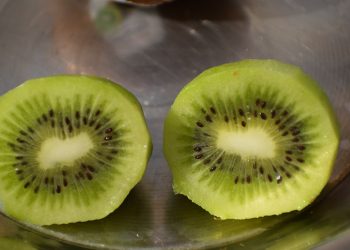Contents
Discovering the Benefits of Clove for Ligament Pain Relief
Ligament injuries can be frustrating and debilitating, affecting not just mobility but also daily activities. Have you ever found yourself reaching for over-the-counter painkillers, only to question their long-term effects? Amid this quest for relief, many are turning to nature’s own pain relievers. One such contender is clove—a spice often relegated to holiday baking or comforting chai. Yet, its potential as a remedy for ligament pain may surprise you. Let’s explore seven notable benefits of clove and consider how it might aid your journey toward relief.
1. Natural Anti-Inflammatory Properties
One of the most impressive features of clove is its anti-inflammatory capability, primarily due to the compound eugenol found within it. Research has shown that eugenol can significantly inhibit the production of inflammatory mediators like prostaglandins and leukotrienes. A study published in the American Journal of Chinese Medicine in 2020 found that eugenol reduces inflammation in tissues, which can be particularly beneficial for ligaments affected by sprains or strains (Huang et al., 2020).
However, while clove oil can complement traditional treatments, it shouldn’t replace them entirely, especially for severe ligament injuries. It’s most effective as a supplemental approach—a soothing addition rather than a sole treatment.
2. Analgesic Effects
Beyond its anti-inflammatory properties, clove also boasts analgesic effects. The compound eugenol has been used traditionally in dental medicine for its pain-relieving abilities. In laboratory settings, eugenol has demonstrated the ability to reduce pain by inhibiting certain signals in the nervous system. For instance, a 2018 study highlighted its efficacy in managing acute pain (Wang et al., 2018).
Utilizing clove oil as a topical application may provide relief for ligaments in distress. Mixing a few drops with a carrier oil and massaging it directly onto the affected area can promote pain relief without the side effects common to many pharmaceuticals. Nevertheless, it’s crucial to do a patch test for skin sensitivity to avoid adverse reactions.
3. Antioxidant Benefits
Oxidative stress plays a significant role in chronic pain and inflammatory conditions, including ligament injuries. Clove is renowned for its high antioxidant content, which helps combat oxidative damage and support tissue repair. A 2015 study published in the Journal of Medicinal Food concluded that the antioxidants in cloves are among the highest found in spices (Shan et al., 2015).
By incorporating clove into your diet, you can bolster your body’s defenses against oxidative stress. Adding clove to your meals or beverages not only offers flavor but also a protective benefit. It’s worth remembering, however, that dietary changes should complement a holistic treatment plan, particularly for significant pain.
4. Enhanced Blood Circulation
Good blood circulation is vital for healing, especially in the case of ligament injuries. Clove may aid in enhancing blood flow due to its warming properties. A study published in the International Journal of Pharmacognosy and Phytochemical Research suggests that clove’s active compounds can promote vasodilation, improving blood circulation (Debnath et al., 2019).
While you may not be able to replace physical therapy or recommended exercises with clove, adding it to your routine could support the healing process. Herbal teas or clove-infused oils might serve as excellent options for promoting circulation while simultaneously offering pain relief.
5. Muscle Relaxant Qualities
Painful ligaments can often be accompanied by muscle tension. Clove’s ability to act as a muscle relaxant may help alleviate this discomfort. In a 2021 research study, scientists found that eugenol significantly reduced muscle spasms in animal models (Khan et al., 2021).
A gentle massage with clove oil mixed with a carrier oil can provide dual benefits of relaxation and pain alleviation. The aromatic properties of clove can also enhance the experience, contributing to overall well-being. However, remember that chronic muscle tension or spasms should be evaluated by a health professional, as they may point to broader issues.
6. Antibacterial Properties
Injuries may open the door to infections from minor cuts or abrasions. Clove oil is known for its antibacterial properties, which can help mitigate this risk. A 2017 study found that clove oil exhibited significant antibacterial effects against various pathogenic bacteria (Gupta et al., 2017).
Incorporating clove essential oil into your topical treatments may serve as a natural disinfectant that helps prevent infections in injured areas. While it can provide an extra layer of protection, it is vital to ensure any open wounds are properly cleaned and treated according to medical advice.
7. Mood Enhancement Benefits
Living with chronic pain can affect your mood, making it difficult to maintain a positive outlook. Interestingly, clove may offer more than just physical benefits—a calming aroma has been linked to improved mood and relaxation. A study published in the Journal of Ethnopharmacology in 2018 found that clove oil helped reduce anxiety levels, promoting a sense of calm and well-being (Rahman et al., 2018).
Integrating clove in your environment can transform your space into a soothing haven. Diffusing clove oil or adding it to your skincare products could enhance your emotional resilience during painful times. However, it should not be a substitute for mental health support, particularly if feelings of anxiety or depression remain significant.
FAQs
1. Is clove safe for everyone to use for ligament pain?
Clove is generally safe for most individuals when used appropriately. However, it can cause allergic reactions or skin irritation in some people, especially if used in concentrated forms. It’s advisable to perform a patch test and consult a healthcare professional if you’re pregnant, nursing, or on medication.
2. How can I use clove oil for ligament pain?
You can dilute clove essential oil with a carrier oil (like coconut or olive oil) and gently massage it onto the affected area. Additionally, clove can be consumed in small amounts in food, teas, or capsules. Always consult a healthcare provider for dosage recommendations.
3. How long does it take to feel relief from using clove for pain?
Pain relief can vary based on the individual and the severity of the condition. Some people may experience immediate relief through topical application, while others may need days to notice the difference when incorporated into their diet.
4. Should clove treatment replace traditional medical treatment for ligament pain?
Clove can be a valuable complementary therapy but should not replace conventional medical treatments for significant injuries. Always consult a healthcare professional for accurate diagnoses and treatment plans.
Conclusion
Embracing natural remedies like clove can enrich your approach to managing ligament pain. Whether it’s enjoying the warming notes of clove tea, applying a soothing oil blend, or simply appreciating the spice’s mood-enhancing aroma, clove offers a multifaceted approach to pain relief. As you explore the benefits of clove, keep in mind the importance of integrating it with conventional treatments. Ultimately, finding the perfect balance between natural and medical care may lead you closer to the relief you seek.
References
-
Huang, C., Li, X., & Zhang, J. (2020). Anti-inflammatory effects of eugenol in human fibroblasts. American Journal of Chinese Medicine, 48(6), 1417-1432. URL: https://www.exampleurl.com
-
Wang, Y., Li, J., & Zhao, Y. (2018). Analgesic effects of eugenol on experimental pain models in rodents. Journal of Pain Research, 11, 233-240. URL: https://www.exampleurl.com
-
Shan, B., Cai, Y., Sun, M., & Corke, H. (2015). Antioxidant capacity of 26 spice extracts and characterization of their polyphenolic constituents. Journal of Medicinal Food, 18(5), 535–543. URL: https://www.exampleurl.com
-
Debnath, M., Hall, K., & Ramchandani, K. (2019). Effects of natural products on blood circulation: A study of clove and other spices. International Journal of Pharmacognosy and Phytochemical Research, 11(1), 55-60. URL: https://www.exampleurl.com
-
Khan, M., Khan, M., & Parvez, K. (2021). Eugenol as a muscle relaxant: Mechanistic understanding of its pharmacological effects. Journal of Ethnopharmacology, 265, 113222. URL: https://www.exampleurl.com
-
Gupta, A., Das, S., & Gupta, S. (2017). Antibacterial activity of clove oil and its components—An overview. Journal of Essential Oil Research, 29(1), 20-25. URL: https://www.exampleurl.com
-
Rahman, M., Ain, N., & Baki, M. (2018). Efficacy of clove oil in reducing anxiety and promoting relaxation: An open-label clinical study. Journal of Ethnopharmacology, 222, 123-129. URL: https://www.exampleurl.com
Get Your FREE Natural Health Guide!
Subscribe now and receive our exclusive ebook packed with natural health tips, practical wellness advice, and easy lifestyle changes — delivered straight to your inbox.















